The Apple iPad Pro Review
by Ryan Smith, Joshua Ho & Brandon Chester on January 22, 2016 8:10 AM ESTApple Pencil
At this point it probably goes without saying that Apple Pencil has been one of the major points of focus for this tablet. With the iPad Air 2, I noted that a proper stylus and keyboard would go a long way towards making the iPad more productivity focused. It turns out that Apple’s solution to the stylus part of the equation is a custom design that they call the Apple Pencil.
As best as I can tell, this stylus is at least somewhat capacitive-based. If Apple’s marketing material is accurate, it mentions a change from the 120 Hz sampling rate of the capacitive touch screen in normal use to 240 Hz when the stylus is detected. In addition to simple touch, the stylus measures pressure, azimuth, and altitude. When discussing azimuth, we’re basically looking at the angle that the stylus makes with the plane of the display, while altitude is the angle that the stylus makes relative to the normal of the display.
Charging the stylus is pretty simple. Included in the box is a female to female Lightning connector, so you can use a Lightning to USB cable to charge the stylus with either an AC adapter or a powered USB port. Of course, there’s also the case where you’re trying to charge the device on the go, in which case the stylus can be charged directly from either the iPad Pro or an iPhone. A lot of people have pointed out that this is a rather inelegant method of dealing with charging on the go, but given that the primary method of charging is through a Lightning connector I don’t really see any other solution to this problem, especially without compromising the ergonomics that come with the current design. Charging the stylus happens quickly enough that I never felt that it was a limiting factor in usage.
Apple Pencil itself is a comfortable instrument to write with. Unlike most styluses on the market designed to fit in a tablet or smartphone the body has a sufficiently large diameter that gripping it isn’t difficult for extended periods of time. The pencil also has an uneven weight distribution, which means that it won’t roll off of tables, though not so uneven that it's noticeable in the hand. The one problem worth noting here is that Apple Pencil is glossy plastic. After extended use I noticed that finger oil and lint had a tendency to produce an uncomfortable sensation. A matte soft touch texture may make more sense here, but that would introduce additional issues with the finish wearing off with extended use.
Credits to Nina Ling and Cory Ye respectively
Of course, the important part here is writing with the stylus. Although I’ve already discussed the application of note taking in class before, in the time since my initial remarks on the iPad Pro I decided to do an entire project report on Apple Pencil in order to get a better feel for the stylus and its usability. This was done for a digital logic project in which we were required to draw out finite state machine diagrams, truth tables, block diagrams, and other portions of the design. I would estimate that over the course of this project, I spent at least 4 hours a day using the iPad Pro for 2-3 days.
One of the most immediate observations I had was that in some ways, the iPad Pro with Apple Pencil is far and away superior to pencil and paper. Even using the rather spartan Notes app this became clear. There were multiple cases throughout this project where a change that would have been difficult to make with pencil and paper was relatively simple to do so with Apple Pencil and the iPad Pro. For example, in cases where extra precision was needed it was possible to zoom in to erase a portion of text precisely. When an erasure was done poorly or on accident, reverting it was trivial as well. The project report, which eventually spanned 16 pages in length was synced to iCloud and was accessible from laptops and smartphones, which meant that it would be difficult, if not impossible to lose accidentally. It’s also noticeably more convenient to carry around an iPad Pro rather than a folder filled with paper. Along the same train of thought, drawing long truth tables with the straightedge function of the Notes app is much easier than carrying around a ruler everywhere. It was also great to have the project requirements and the notes application open side by side, which meant that there wasn’t a need to print out the project spec.
One notable problem that I did encounter with the Notes app is when the work I was doing spanned more than one page/sketch. An example of this would be cases where I would have to construct a state table based upon a state diagram that was sketched based upon the project requirements. If the state diagram was on a separate page, then I would simply have to switch back and forth between the two sketches or save the relevant sketch as an image to view in the gallery application, which felt a bit clunky.
The other issue, as it turns out, was getting the sketches off of the iPad Pro onto my laptop once I was ready to turn my work in. On the plus side, because all of my sketches were already digitized there was no need to locate a scanner and generate images or PDFs. However, the Notes app felt noticeably constrained in terms of export options. For example, there was no way of turning the 16 sketches I had drawn into a PDF on the device. I also discovered that as of iOS 9.2 attempting to save all sketches as images was broken as only 5 of the 16 sketches were saved to the gallery. Exporting the sketches by attaching them to an email was also unacceptable as the email export resolution was nowhere near native resolution. In the end, in order to get all of the sketches I had made off of the iPad in full resolution I had to manually select each sketch and save it to the gallery, before uploading all of the images to Dropbox. From my laptop, I could then put all of the images together into a PDF or some other acceptable format for submission.
However, despite these issues I found that the iPad Pro was remarkable for doing what very few tablets have really succeeded at. The iPad Pro actually feels comparable to pencil and paper to the extent that I never once felt like I wanted to go back to pencil and paper while doing the final project. Both the display and the stylus have sufficient resolution to the extent that precise work is easily achieved. The feel of the stylus feels like a good pen or pencil, without odd weight distribution problems.
Latency is also exceptionally low compared to most consumer solutions. Out of curiosity, I borrowed a Wacom Cintiq connected to a Macbook Air with an Intel i5 4250U CPU (Haswell 1.3/2.6 GHz) to do a basic latency comparison. Using Adobe Photoshop on the Wacom Cintiq and Adobe Photoshop Sketch on the iPad Pro and a high speed camera, I attempted to characterize latency by using a simple pen tool (3 px, full flow) by measuring the delta in time from when the pen was at a specific point and when inking reached the same point.
| Stylus Latency - iPad Pro vs. Wacom Cintiq | ||||
| iPad Pro (Photoshop Sketch) |
Wacom Cintiq (Photoshop) |
|||
| Latency | 49ms +/- 4ms (3 frames) |
116ms +/- 4ms (7 frames) |
||
After a few trials I measured an approximate latency for the iPad Pro of roughly 49ms or 3 frames of delay, while the Wacom Cintiq in this configuration had roughly 116ms or ~7 frames of delay. It’s worth mentioning here that the camera I used was recording at 240 FPS, so these figures could be off by around 4ms even before accounting for human error. Although the Cintiq 22 HD does have higher latency, I wouldn’t put too much into this as it’s likely that a more powerful computer driving the display would narrow, if not eliminate the gap entirely.
For reference, I estimated the Surface Pro 3 to have about 87 ms or 5-6 frames of delay, and the Surface Book to have about 69 ms or around 4 frames of delay. However, in the case of the Surface devices I was using Fresh Paint, which is a drawing application that isn't exactly comparable to Photoshop but is sufficient for comparison purposes. To give an idea for how much the application has an effect on latency, the Apple Notes app has roughly 38 ms or around 2 frames of latency from when the stylus tip passes over one point to when the inking reaches the same point.
While not strictly hardware, the software equation is really a critical part here as there are actual applications for the Apple Pencil which make it possible to use right now. An example of this would be OneNote, uMake, and Adobe Comp CC/Photoshop Sketch. Some of these applications work shockingly well like Photoshop Sketch, while something like OneNote feels relatively sparse by comparison as pretty much the only thing you can do with the stylus is draw simple lines with pressure sensitive thickness, with some automatic conversion of drawings to basic geometric shapes. With the right software, I can easily see the iPad Pro completely displacing traditional note-taking in light of obvious advantages that would come with OCR and digitizing notes for easy search.


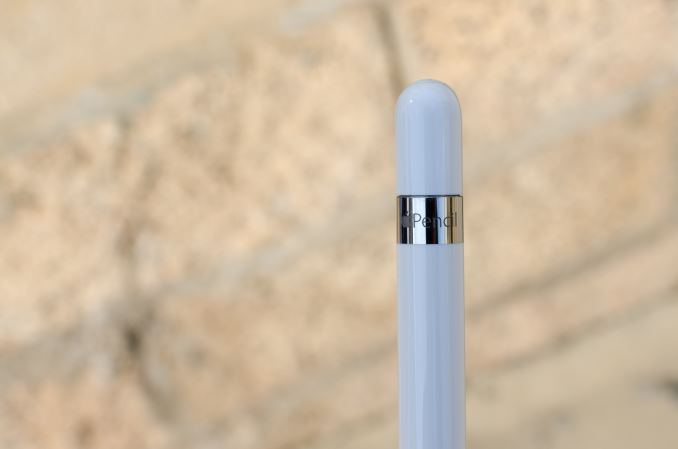
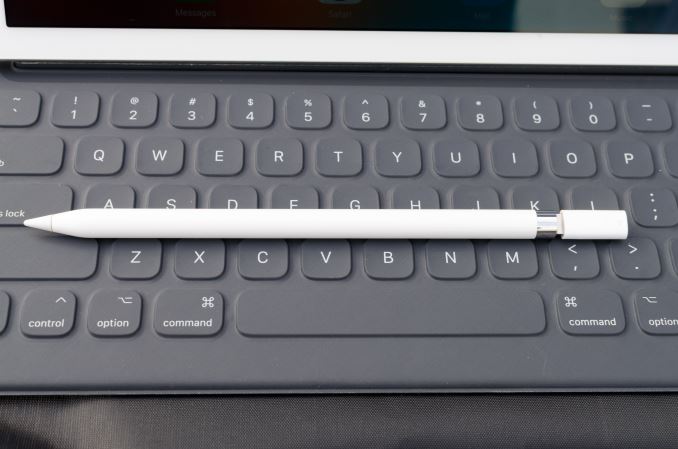
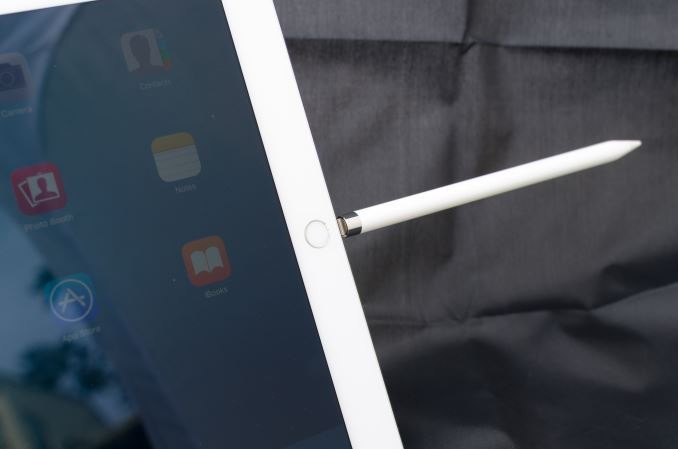

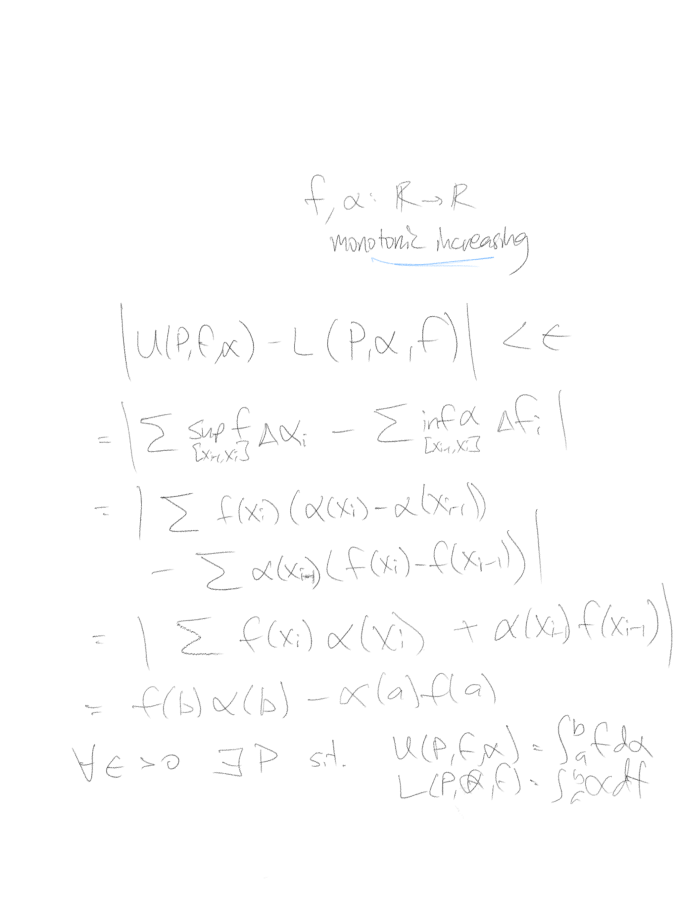
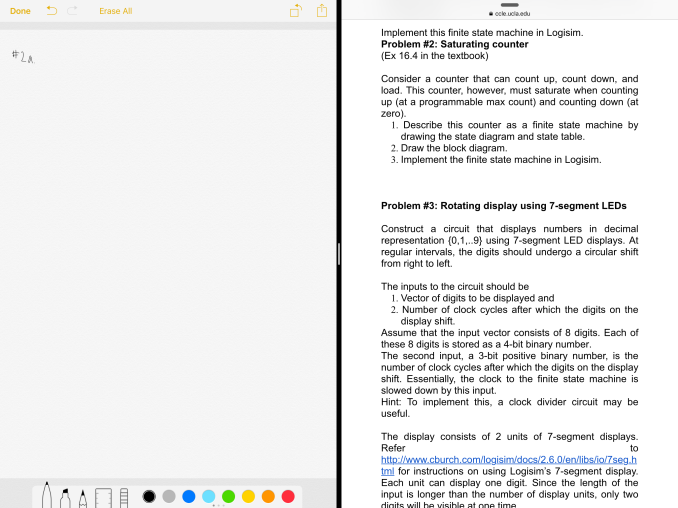
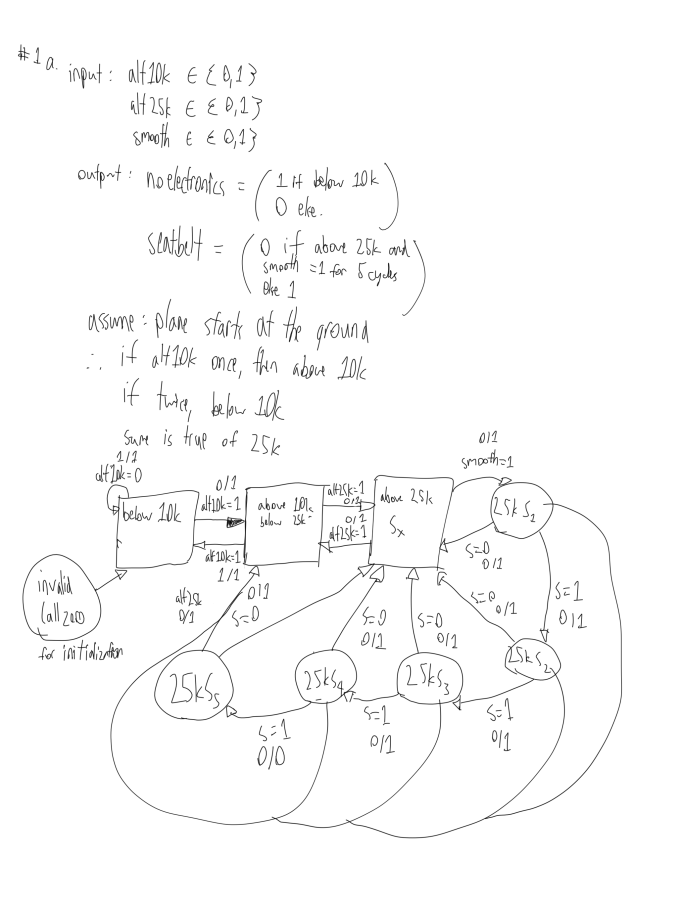
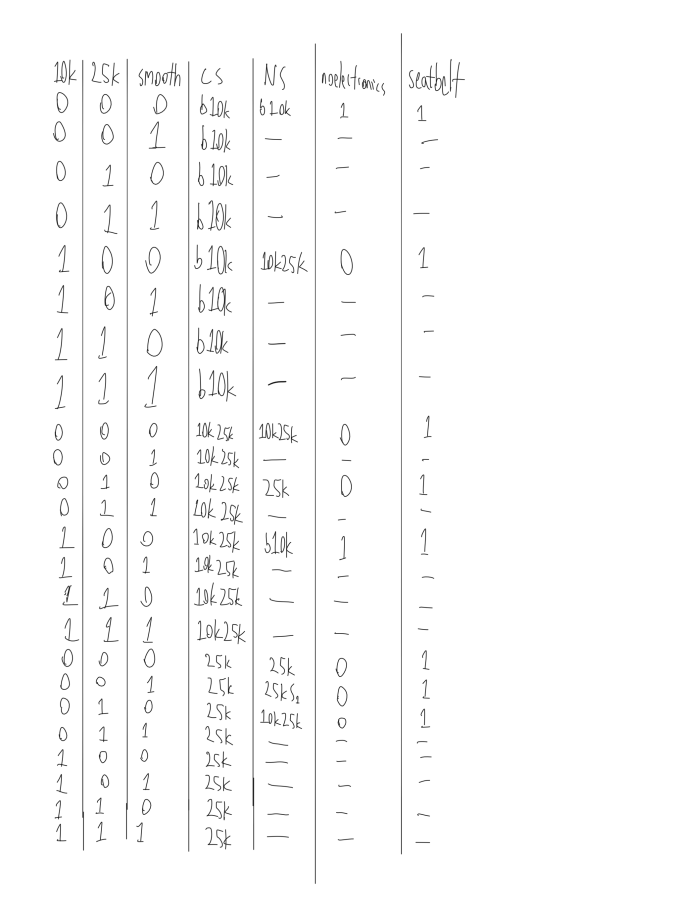

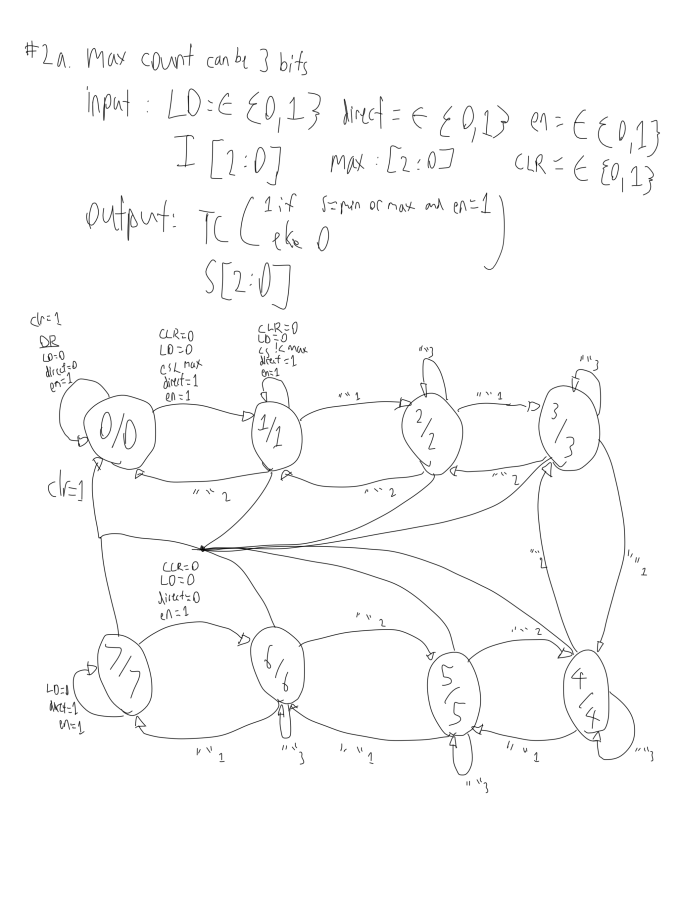
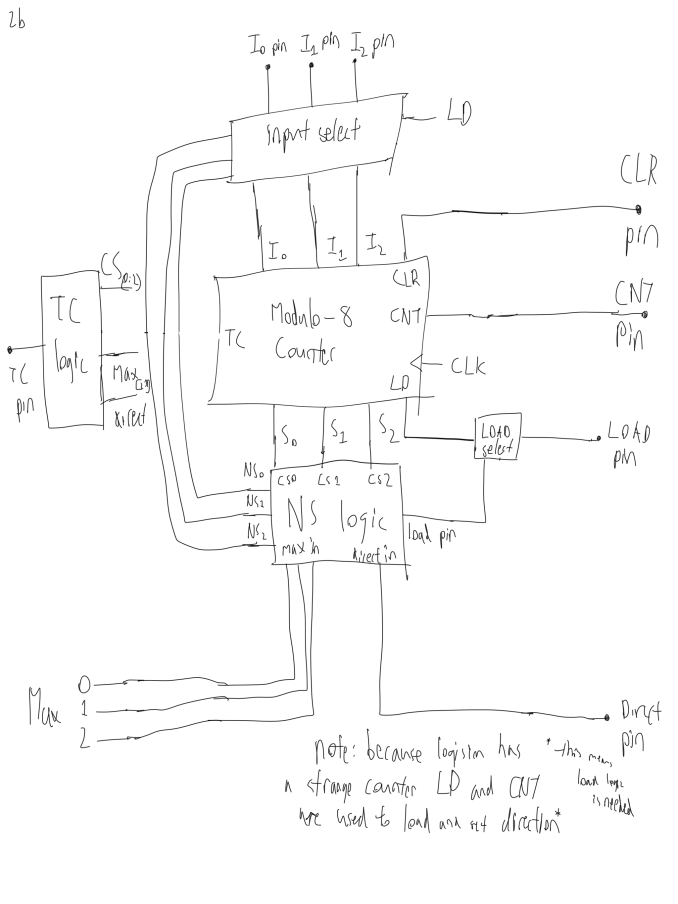
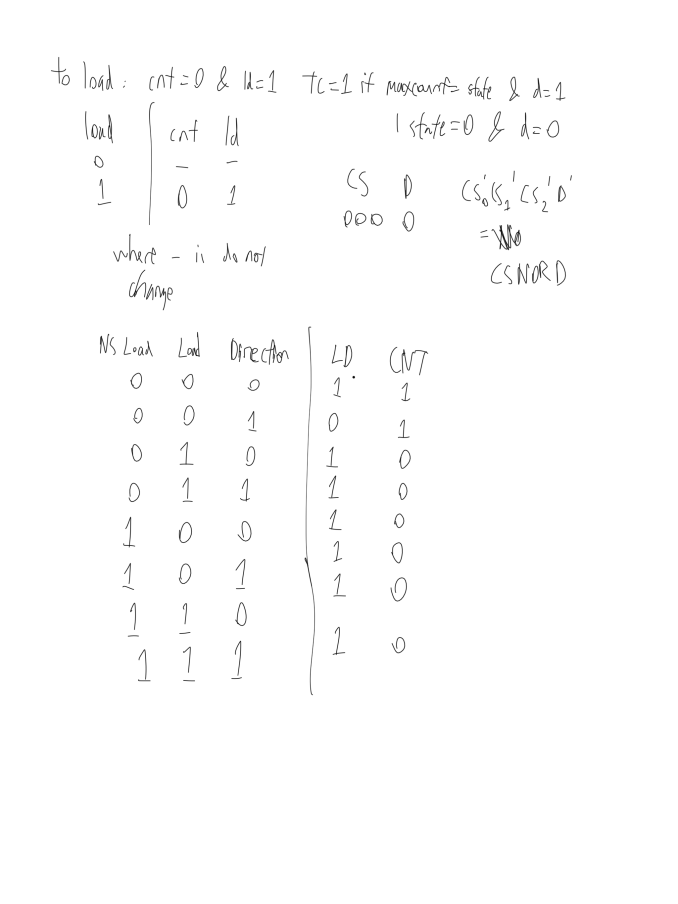
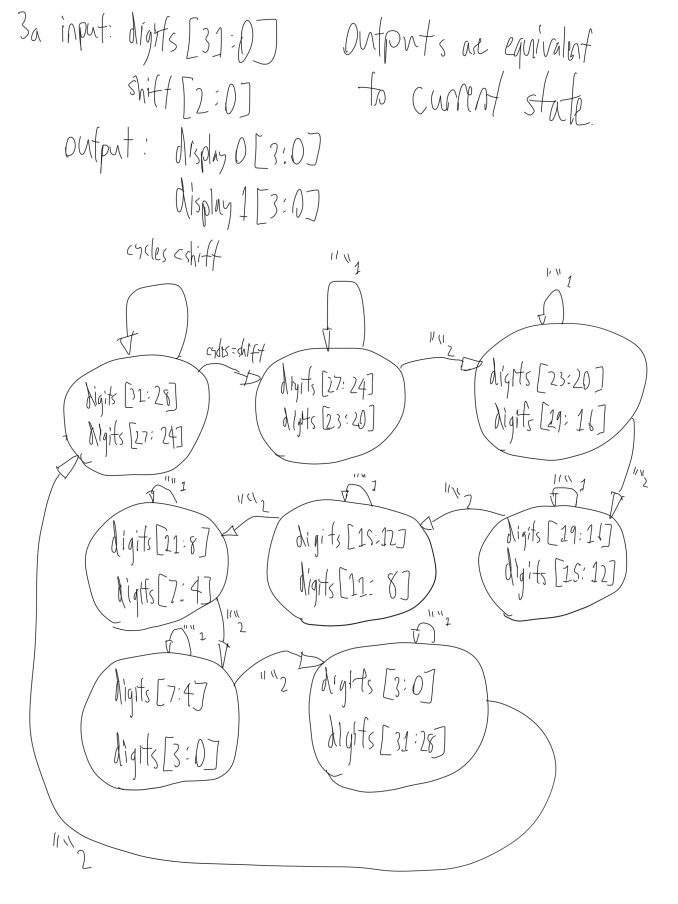

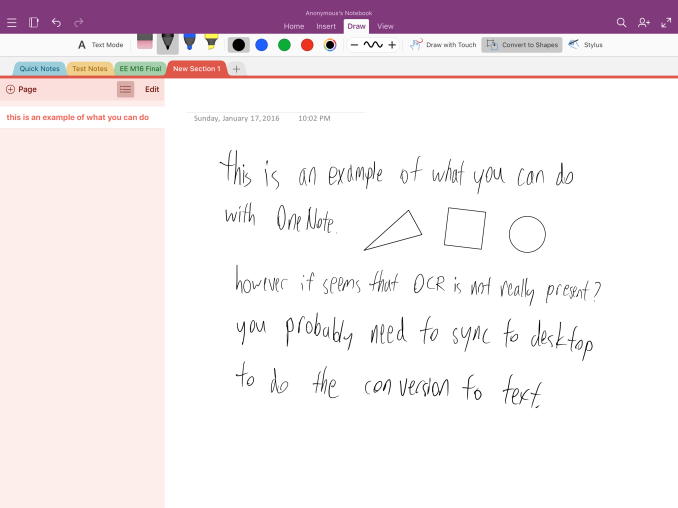








408 Comments
View All Comments
jasonelmore - Friday, January 22, 2016 - link
This, there is no filesystem. The hardware can be as fast as it wants, but it's severely limited by it's input options, and it's locked down nature. A ipad, or a phone for that matter, will never be able to replicate a x86 device. aarch64 is crude in comparison to x86 as detailed in the 2nd page of this article.Sure they can re-write a lot of it, and make a bunch of compramises to make it work, but they wont' waste the time, because:
1: nobody wants to pay more than $10 for apps on the platform because it's seen as a toy and disposable within 4 years
2: Lacks a true filesystem for moving files from physical media, to the devices
3: Lacks precise input methods for quick and ultra precise manipulation of the software (unlike mouse or trackball on pc). Like Slicing a video file, or selecting text and making it Bold, italic, underlined
4: platform lacks pro level payment and upgrade options for developers
Sc0rp - Friday, January 22, 2016 - link
There's a file system, you just don't have access to it.1) Pretty much any computer is disposable in 4 years because the shelf life for hardware before it goes obsolete is about 3 years. Protip: If you 'upgrade' your processor, video card and/or motherboard (!) you just assembled a new computer. It doesn't matter that it is in the same case that your old computer used. Also users are willing to pay more than $10 for software. But, to be honest a lot of legacy developers from the desktop realm have been giving their users the shaft on software prices for years and years and consumers are more apt to pay $6 for an app that actually does that they need rather than $700 for one that does way more than they ever will need.
2) There is a file system. You can plainly see it and interact with it when you use software like iExplorer. Personally, I have no problems with handling files on iOS9 and moving them about.
3) Apple Pencil. Have you heard of it?
4) Actually those options already exist on the platform. I don't know why you think they don't when they so clearly do and have been demonstrated by iOS game developers for years now. You mean to tell me that I can pay $6-20 for a ship or $100 for a bushel of smurfberries but somehow there's no way to add in upgrade options? Dude, just make it optional DLC.
jasonelmore - Saturday, January 23, 2016 - link
keep drinking the kool-aid man.1: apple has succeeded in convincing you that computers are disposable within 4 years. Thousands of schools around the world are using Pentium 4's and Nehalm Pc's. These pc's can run the latest photoshop CC, Office Suite, or any other software that has been made recently.
I know a ton of people using i7 920's and are playing the latest games no problem. With apple, the applications just wont load at all, because they require a certain OS. WIndows 10 Supports very old hardware, and very slow hardware. Same with any flavor of linux. OSX and iOS do not.
2: the file system is not accessible within the device. So your argument is basically this. Use a 2nd machine, install a third party application, and access the files. Really? Pro's don't need a hidden or in-accessible file system, they need file permissions, and only a jailbreak can give that to them.
3: The pencil is a drawing device first and foremost. It is not designed, nor meant to be, a primary way of interacting with the device's OS and applications. Moreover, only one device in apple's entire product history, supports this peripheral. Good luck slicing video with precision. A mouse can hover over a precise point, and offer two context actions via left or the right mouse button. A pencil can hover over a precise point, and do nothing. any actions require tap and hold, and buttons aren't used anywhere except for drawing apps.
4: Developers want to be able to charge yearly fee's for updates, instead of release a whole new app. Like Tweetbot 1, 2, 3,, 4. In-app purchases are not meant for upgrades. They are meant to be used as a glorified "demo" system. You demo the app, and then buy it if you like it. There are a number of articles and reddit posts about developers leaving ios and going with their own distribution platform due to apples store policies. Big developers too, not little ones.
Constructor - Saturday, January 23, 2016 - link
You clearly don't know what you're talking about.1. The iPad 3 which I have just replaced with an iPad Pro has just started its new life for a new user after 4 years of perfectly up-to-date and fully supported use by me. It is still fully supported and almost everything that's available for iOS still runs on it, most of it very well – and that on a device which has about 1/10th of the iPod Pro's performance!
The main reason why you can still use old Windows PCs (or old Intel Macs, for that matter, like I'm doing right now!) without too many disadvantages against new ones is that Intel has entered a prolonged stagnation phase since they've bumped into the end of Moore's Law with their ridiculously outdated x86 architecture. There simply is hardly any movement forwards any more on the Intel front.
Meanwhile Apple is cranking up the performance of their own processors at a speed we haven't seen for a decade on the desktop (it's actually a major achievement that the older iOS devices run as well as they do compared to the multiple times more powerful new ones!).
2. Where I want filesystem access under iOS, I have it. I use Good Reader as my general-purpose local file manager for all kinds of files (including local or remote up- and downloads) and I can use iCloud, Dropbox and others for online shared filesystems. Your imagined problem is pretty much just an imaginary one.
3. The Pencil is a precise pointing device. Which can be user everywhere. It's just not needed most of the time, in part because the touch interface can be used very precisely without it already.
4. Payment is actually a lot easier and simpler than on any desktop platform, and in-app-payment is explicitly not permitted for "demo unlocking". Where it's done well it can unlock additional features, which can be used for featured upgrades as well.
Your whole post betrays above all a profound ignorance about iOS and looks a lot like a panicked attempt to somehow justify why the exact habits you happen to have formed somehow were the only possible way to do anything for everybody.
But as always, the world is not as simple or as limited as that.
jasonelmore - Saturday, January 23, 2016 - link
1: what about the iphone 4, or ipad 2? Stuck on iOS 7 and can't be updated any further2: Physical media? USB drive? Even android can take a thumb drive. This allows android to be more of a traditional computer. You can store ISO's on your phone, EXE's, etc, and use your phone as a mini-laptop for working with other machines. Your goodreader just lets you view the files, so your solution is to email it or dropbox it everytime you need it on a different device? that's what we call a "work-around".
Sending everything over the cloud is not something everyone wants to do, or can do. What if your in a area with no service, or better yet, you don't subscribe to service, and you want to use the phone as a computing device on wifi.
3: again, the pencil is not comparable to a mouse or trackpad. the ipad has no cursor, Your fingers are large compared to a mouse selecting a single pixel on a screen. Main actions, and contextual actions are done via tap, long press, etc.. selecting text on a touch screen should be a good enough example to understand what i'm getting at.
4: did you know apple will not even let you update apps you already own, if your credit card expires, or does not have any money on it?
the fact that you are trying to argue this point, only shows that you have not been following public out cry on this subject. No Paid upgrades, No demo's (very important for expensive pro like apps), no way for developers to respond to bad reviews, at any given time apple can replicate your app, and since apple apps are not sandboxed, they have a inherit advantage. everyone else must be sandboxed, and pay a 30% royalty.
Regarding payment on PC, pretty much everything pro level has gone to a subscription model. If by easy, you mean having a credit card on file for all purchases, then ok, it's easy. But it's also locked down, and like i said, you cant update the app if your card suddenly runs out of money or you go over the credit limit. it will force you to enter a new credit card, just to update a app you already paid for.
look man, if your ok with apple making all the choices for you, then by all means, keep on doing what your doing. but some people have different ideas and want to customize the device to their needs.
i can tell your a fanboy because you started insulting me there at the end, and that only shows your having a hard time justifying what you say to be true. These are not my habits, they are established work-loads that people have been doing on their computers for decades.
you really do need a filesystem to be called a comptuer. and you need a cloud service that is compatible with all platforms and file types. Your solutions to a lot of my arguments is used a bunch of third party programs. a file system is fundamental to computing. there should be a 1st party file explorer (even a restricted one with the option to run root). To deny that access is basically saying "we are apple and we know better, you don't need that option"
Constructor - Saturday, January 23, 2016 - link
1: what about the iphone 4, or ipad 2? Stuck on iOS 7 and can't be updated any furtherWrong again, both directly and contextually.
First, The iPad 2 is still supported by iOS 9.2.1 which is the current version. Only the iPhone 4 has iOS 7 as its latest version.
This is a pretty illuminating comparison of iOS device performance historically:
http://browser.primatelabs.com/ios-benchmarks
(Select Multi-Core results)
iOS 9 now covers a performance range from the iPad Pro down to the iPhone 4S which is 13 times slower.
The iPhone 4 is even 26 times slower, and it only has a single CPU core, contrary to all devices which are still currently supported to this day (including the iPad 2).
And I'm pretty sure you'd be right in front raking Apple over the coals for iOS 9 running less than smoothly on that single-core iPhone 4.
It's actually quite remarkable how well iOS still runs on those over four years old devices after the breakneck performance development of the past years in the iOS space.
2: Physical media? USB drive?
And then where is that floppy drive "everybody knows" is absolutely required..? ;-)
Even android can take a thumb drive. This allows android to be more of a traditional computer. You can store ISO's on your phone, EXE's, etc, and use your phone as a mini-laptop for working with other machines. Your goodreader just lets you view the files, so your solution is to email it or dropbox it everytime you need it on a different device? that's what we call a "work-around".
...and wrong again!
Good Reader can do many things, among them using DropBox. But I can also simply tap a button and Good Reader appears in my local WiFi network (including in the one my iPhone has just provided) as a bog-standard WebDAV network drive which I can directly mount on my Mac, on a PC or on any other mobile device (including on a Good Reader instance running there if I want).
GoodReader can also mount locally available shares and download from these (or upload to them).
I can also throw files to another Apple device purely locally via AirDrop, or I can exchange files locally via Weafo (which appears as a web-server from which anybody else can download the file). And that's only scratching the surface (ahem) of what I could do with iOS since I have simply stopped exploring further for the time being because I haven't needed more than that personally.
You know very little about what's actually possible under iOS.
3: again, the pencil is not comparable to a mouse or trackpad. the ipad has no cursor, Your fingers are large compared to a mouse selecting a single pixel on a screen.
...and that is why there is the Pencil for those rare events where I actually need to address specific pixels. Finger-based UIs can actually be quite precise otherwise, so these needs are actually relatively rare.
Main actions, and contextual actions are done via tap, long press, etc.. selecting text on a touch screen should be a good enough example to understand what i'm getting at.
You can't have actually used iOS devices if you still believe that. Text selection – to take your example – works very well and very precisely by finger touch alone because it is designed for exactly that.
4: did you know apple will not even let you update apps you already own, if your credit card expires, or does not have any money on it?
I've never used a credit card for iTunes in all those years and never had a single problem.
the fact that you are trying to argue this point, only shows that you have not been following public out cry on this subject. No Paid upgrades, No demo's (very important for expensive pro like apps), no way for developers to respond to bad reviews, at any given time apple can replicate your app, and since apple apps are not sandboxed, they have a inherit advantage. everyone else must be sandboxed,
"Outcries" about Apple are the norm rather than the exception. And of course there are valid points to be made in multiple directions. But the measure of the App Store is where there is one that actually works better for a) the users and b) the developers.
There isn't one.
So Apple may not actually have made all the wrong compromises there, as inconvenient as some of them may be for some people. Perfection sounds nice, but actually achieving an actually workable solution is much harder than just clamouring for one.
and pay a 30% royalty.
Ouch. Again with the cluelessness!
First up, these 30% are no "royalty" as pure profit for Apple as you appear to believe, they cover all the costs of distribution including minimum payment transaction charges which are quite substantial as a ratio at the very low item prices in the App Store (no, the percentages you've heard of don't apply there – the minimum charges are much higher than that!). They also cover all other fees and expenses, also including cross-subsidies for the large number of distribution of free apps.
That all the other app stores have never been able to undercut Apple here should have given you a hint or two: It's pretty much run at cost, at Apple as much as anywhere else.
look man, if your ok with apple making all the choices for you, then by all means, keep on doing what your doing. but some people have different ideas and want to customize the device to their needs.
You don't even know what can or can't be done with iOS as it is, and yet you're all about sweeping generalizations.
i can tell your a fanboy because you started insulting me there at the end, and that only shows your having a hard time justifying what you say to be true. These are not my habits, they are established work-loads that people have been doing on their computers for decades.
I'm simply fed up with always the exactly same ignorant cow manure being shoveled all over the place by people who are full of prejudices but empty on actual knowledge of the topic, let alone actual, practical experience.
you really do need a filesystem to be called a comptuer.
Rubbish. I could just as arbitrarily claim that if you didn't have a HiDPI screen your machine was a mere toy and "completely unusable" for any serious uses just because that's what I fancied most.
In real life with real use I need solutions which are appropriate to my actual needs. Stomping your foot and throwing tantrums when you can't replicate exactly the same workflow you happened to have earlier is silly and shortsighted.
Successfully working with IT has always meant adapting what was actually available to what one actually needed and being creative at getting both together for as much pragmatic efficency as feasible.
Crybabies whining about their bygone habits and preferences have always been left behind in the process when new opportunities appeared on the scene.
and you need a cloud service that is compatible with all platforms and file types. Your solutions to a lot of my arguments is used a bunch of third party programs. a file system is fundamental to computing. there should be a 1st party file explorer (even a restricted one with the option to run root). To deny that access is basically saying "we are apple and we know better, you don't need that option"
It is as if you haven't paid any attention for the past nine years.
iOS is a safe, stable and still extensible mobile platform which can run third-party software. This was extremly hard to achieve, and Apple forced a lot of compromises regarding "hackability" because of it. I get how that rubs many people the wrong way (not least as a developer myself, even if not for iOS so far), but as someone who has developed and handled substantially complex, extensible systems (some from the ground up) I am very much aware of where crucial decisions have to be made for something like that, and between which alternatives these decisions have been in major cases.
And the very real stability and safety (including privacy protection!) which actually results from Apple's decisions is hard to deny.
I'm not at all denigrating your preference for completely different kinds of systems where many decisions have been made completely differently, but your problem here is that you don't seem to be aware what these criteria and these options even are when it's about the creation of a major platform.
One can easily disagree with many of Apple's decisions and rules, and that aplies to myself as well in various cases, but actually being aware of why Apple is handling many things the way they do is actually relevant here, and in most cases it's actually knowable.
You'd be much better off if you started at least questioning some of your evident prejudices and preconceived notions at the very least for some broader perspective – which is valuable even if your conclusions for your own system preferences end up in exactly the same place as they do now, just not out of sheer ignorance any more.
Morawka - Saturday, January 23, 2016 - link
Good reader requires you to be on the same network as the machine you want to share files with. Some networks do not even have wifi ap's so your sol in that regard. The only workaround I've found is to pack around a nano wifi router that can run off a battery pack, and physically hook it into the network (if you even have access to the ports). ita really just a file viewer with a few nifty features, but it does not excuse the lack of a native solution. Micro usb otg thumb sticks are the shit. No worrying about sensitive files over the network.MaxIT - Saturday, February 13, 2016 - link
You are becoming ridiculous... Are you really complaining because a smartphone from 2010 isn't supported anymore in 2016 ? Lol at you ...Tell me about HTD Evo or Google Nexus One, both android flagships from 2010 .... They were death and buried by 2012 .....
FunBunny2 - Saturday, January 23, 2016 - link
-- bumped into the end of Moore's Law with their ridiculously outdated x86 architecture.not true, strictly speaking. years ago Intel stopped executing the ISA in silicon, and went with an emulator which ran "micro-code" on a "micro-architecture". the real processor (ALU, etc.) in a X86 chip is some RISC machine; which gets changes each tock. whether this is really more efficient than using those billions and billions of transistors to do all of X86 in silicon is a question I've never seen answered.
Constructor - Saturday, January 23, 2016 - link
Exactly: They have been forced to build a real-time hardware cross-assembler into their CPUs because that was the absolute last resort to get ahead at all any more. Absolute madness, and close to a miracle that they've pulled that off at all, even with the substantial penalties that entails.The ARM64 ISA, by comparison, is completely new, legacy-free and was designed from scratch for optimal execution efficiency. It's not even backward compatible to ARM32. The two are completely different, much more different than x86 and AMD64.
ARM CPUs generally don't need any microcode – they can decode and execute the instruction stream directly, and complications are kept to a minimum (just consider, by comparison, what an Intel CPU needs to take care of internally when processing asynchronous high-priority interrupts, for instance!).
Intel has always completely botched their basic ISA designs. Remember the original x86? What a horrendous, incompetently conceived turd! The painful iterations after that were hardly any better, and If AMD hadn't helped them out with AMD64 (which given what they had to start from was actually somewhat decent), if they hadn't put everything in chip design and manufacturing and if the Microsoft monopoly hadn't afforded them a perfect base for their own monopoly, they would have been toast a long time ago already.
The declining Windows PC market, however, is not a good portent at all for Intel specifically, especially when looking at the continuous profit erosion of the dwindling number of PC manufacturers.
The era of the ascent of the Windows PC is over. The rollercoaster car has just passed the top of its climb.